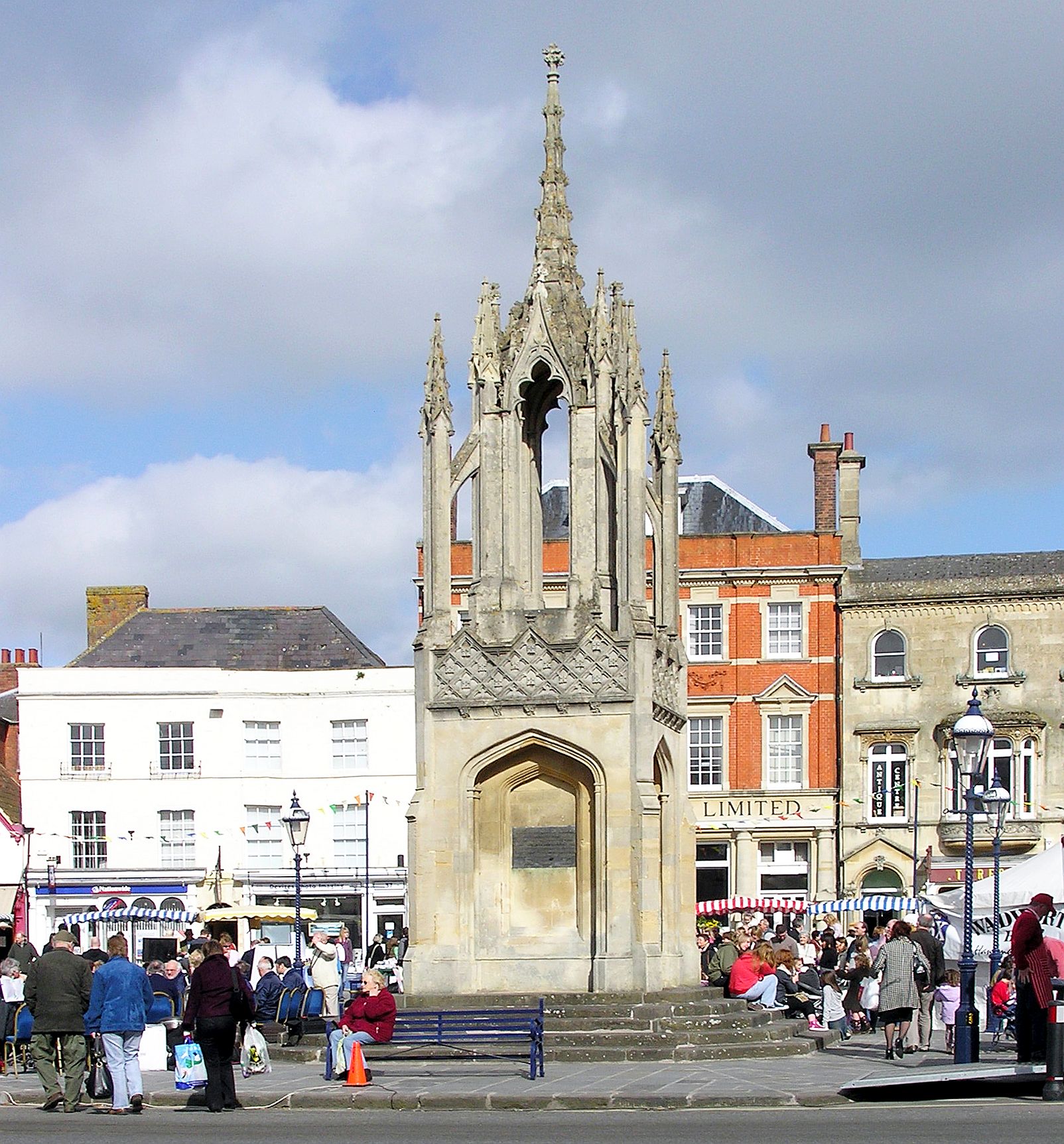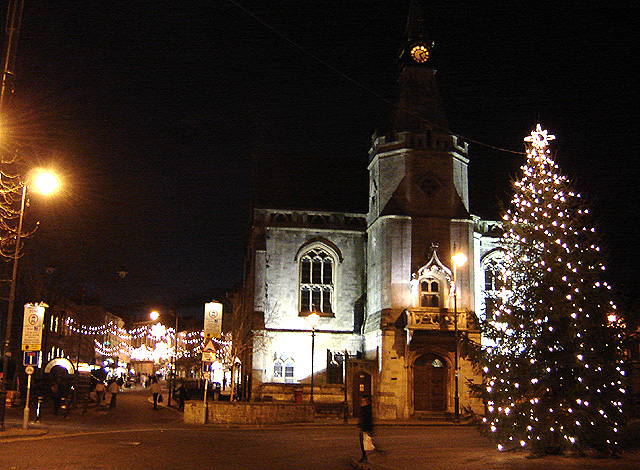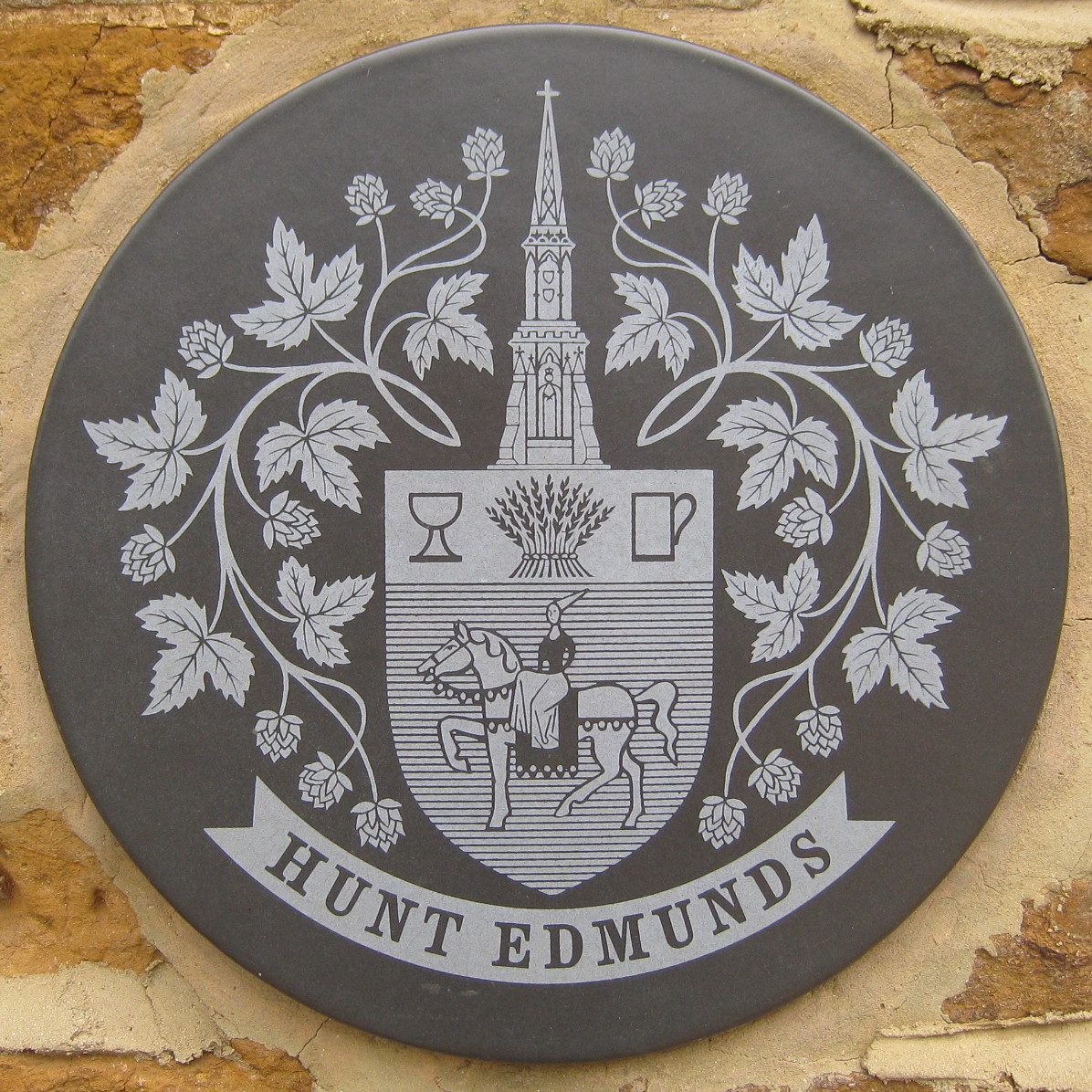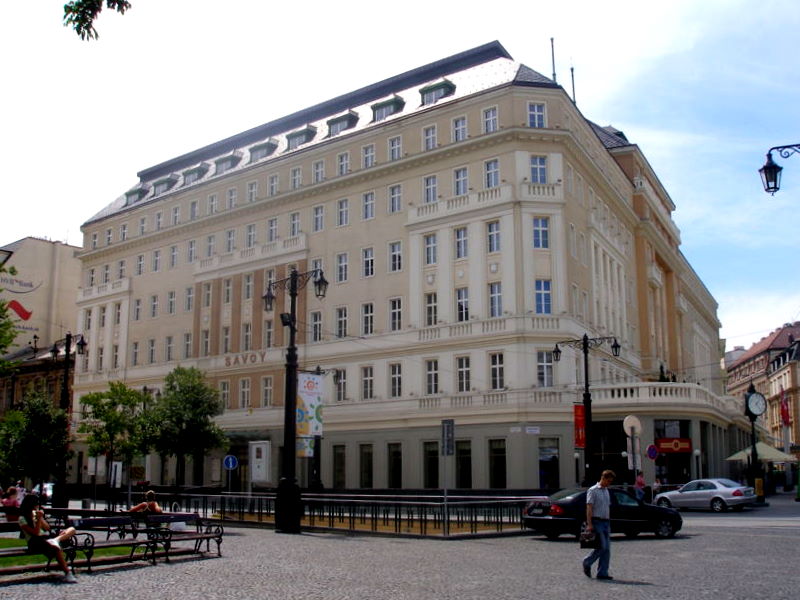|
The Talbot, Stow-on-the-Wold
The Talbot, formerly known as The Talbot Hotel, is a public house in the Market Square in Stow-on-the-Wold, Gloucestershire, England. The structure, which was originally a coaching inn and later served as the local corn exchange as well as the main hotel in the town, is a Grade II listed building. History The Talbot was originally conceived as a coaching inn with stables in the street behind. It was designed in the vernacular style, built in rubble masonry in around 1714. In the 1840s, the building began to serve as the local corn exchange and, at that time, the left-hand section of three bays was refaced in ashlar stone such that it slightly projected forward onto the Market Square. The new façade was fenestrated with sash windows on all three floors with hood moulds above each window and a parapet at roof level. Meanwhile, the right-hand section of two bays remained faced in rubble masonry with more basic finishes. A brass letter box was installed between the windows on the ... [...More Info...] [...Related Items...] OR: [Wikipedia] [Google] [Baidu] |
Stow-on-the-Wold
Stow-on-the-Wold is a market town and civil parish in Gloucestershire, England, on top of an 800-foot (244 m) hill at the junction of main roads through the Cotswolds, including the Fosse Way (A429), which is of Roman origin. The town was founded by Norman lords to absorb trade from the roads converging there. Fairs have been held by royal charter since 1330; a horse fair is still held on the edge of town nearest to Oddington in May and October each year. History Origins Stow-on-the-Wold, originally called Stow St Edward or Edwardstow after the town's patron saint Edward, probably Edward the Martyr, is said to have originated as an Iron Age fort on this defensive position on a hill. Indeed, there are many sites of similar forts in the area, and Stone Age and Bronze Age burial mounds are common throughout the area. It is likely that Maugersbury was the primary settlement of the parish before Stow was built as a marketplace on the hilltop nearer to the crossroads, to take advan ... [...More Info...] [...Related Items...] OR: [Wikipedia] [Google] [Baidu] |
Masonic Lodge
A Masonic lodge, often termed a private lodge or constituent lodge, is the basic organisational unit of Freemasonry. It is also commonly used as a term for a building in which such a unit meets. Every new lodge must be warranted or chartered by a Grand Lodge, but is subject to its direction only in enforcing the published constitution of the jurisdiction. By exception the three surviving lodges that formed the world's first known grand lodge in London (now merged into the United Grand Lodge of England) have the unique privilege to operate as ''time immemorial'', i.e., without such warrant; only one other lodge operates without a warrant – the Grand Stewards' Lodge in London, although it is not also entitled to the "time immemorial" title. A Freemason is generally entitled to visit any lodge in any jurisdiction (i.e., under any Grand Lodge) in amity with his own. In some jurisdictions this privilege is restricted to Master Masons (that is, Freemasons who have attained the ... [...More Info...] [...Related Items...] OR: [Wikipedia] [Google] [Baidu] |
Corn Exchanges In England
Corn exchanges are distinct buildings which were originally created as a venue for corn merchants to meet and arrange pricing with farmers for the sale of wheat, barley, and other corn crops. The word "corn" in British English denotes all cereal grains, such as wheat and barley. With the repeal of the Corn Laws in 1846, a large number of corn exchanges were built in England, particularly in the corn-growing areas of Eastern England. However, with the fall in price of English corn as a result of cheap imports, corn exchanges mostly ceased to be built after the 1870s. Increasingly they were put to other uses, particularly as meeting and concert halls. Many found a new lease of life in the early 20th century as cinemas. Following the Second World War, many could not be maintained, and they were demolished. In the 1970s their architectural importance came to be appreciated, and most of the surviving examples are listed buildings. Most of the surviving corn exchanges have now been rest ... [...More Info...] [...Related Items...] OR: [Wikipedia] [Google] [Baidu] |
Devizes
Devizes is a market town and civil parish in Wiltshire, England. It developed around Devizes Castle, an 11th-century Norman castle, and received a charter in 1141. The castle was besieged during the Anarchy, a 12th-century civil war between Stephen of England and Empress Matilda, and again during the English Civil War when the Cavaliers lifted the siege at the Battle of Roundway Down. Devizes remained under Royalist control until 1645, when Oliver Cromwell attacked and forced the Royalists to surrender. The castle was destroyed in 1648 on the orders of Parliament, and today little remains of it. From the 16th century Devizes became known for its textiles, and by the early 18th century it held the largest corn market in the West Country, constructing the Corn Exchange in 1857. In the 18th century, brewing, curing of tobacco, and snuff-making were established. The Wadworth Brewery was founded in the town in 1875. Standing at the west edge of the Vale of Pewsey, the town is about ... [...More Info...] [...Related Items...] OR: [Wikipedia] [Google] [Baidu] |
Wadworth Brewery
Wadworth is a brewery company founded in 1875 in Devizes, Wiltshire, England, best known for their 6X beer brand. History Wadworth & Co. was founded in 1875 when Henry Wadworth purchased the Northgate Brewery in Devizes. It was not long before they exceeded their capacity at the Northgate Brewery and in 1885 they moved premises to a new facility close to their original site. Since then, the brewer has been a major influence on the economy of Devizes and a major provider of ale in the south of England. The present Northgate Brewery is a tower brewery opened in 1885. Beers While 6X is the brewer's best known beer, the company also produce other beers, including several seasonal ales. Beers available throughout the year: * 6X (4.1% abv on draught, 4.3% abv cans and bottles) * Henry's Original IPA (3.6%abv) * Horizon – Golden Ale (4.0% abv) * Bishop's Tipple – Golden ale, full flavoured (5.0% abv on draught, 5.5% abv in bottle) * Swordfish – A stronger version of ... [...More Info...] [...Related Items...] OR: [Wikipedia] [Google] [Baidu] |
The History Press
The History Press is a British publishing company specialising in the publication of titles devoted to local and specialist history. It claims to be the United Kingdom's largest independent publisher in this field, publishing approximately 300 books per year and with a backlist of over 12,000 titles. Created in December 2007, The History Press integrated core elements of the NPI Media Group within it, including all existing published titles, plus all the future contracts and publishing rights contained in them. At the time of founding, the imprints included Phillimore, Pitkin Publishing, Spellmount, Stadia, Sutton Publishing, Tempus Publishing and Nonsuch. History The roots of The History Press's publishing heritage can be traced back to 1897 when William Phillimore founded a publishing business which still carries his name, however the company itself evolved from the amalgamation of multiple smaller publishing houses in 2007 that formed part of the NPI Media Group. The large ... [...More Info...] [...Related Items...] OR: [Wikipedia] [Google] [Baidu] |
Bass Brewery
The Bass Brewery () was founded in 1777 by William Bass in Burton-upon-Trent, Staffordshire, England. The main brand was Bass Pale Ale, once the highest-selling beer in the UK. By 1877, Bass had become the largest brewery in the world, with an annual output of one million barrels. Its pale ale was exported throughout the British Empire, and the company's iconic red triangle became the UK's first registered trade mark. Bass took control of a number of other large breweries in the early 20th century, and in the 1960s merged with Charrington United Breweries to become the largest UK brewing company, Bass Charrington. The brewing operations of the company were bought by Interbrew (now Anheuser-Busch InBev) in 2000, while the retail side (hotels and pubs) were renamed Six Continents plc. Because at the time Interbrew controlled a large portion of the UK beer market, the Competition Commission instructed Interbrew to sell the Bass brewery along with certain brands to Coors (n ... [...More Info...] [...Related Items...] OR: [Wikipedia] [Google] [Baidu] |
Banbury
Banbury is a historic market town on the River Cherwell in Oxfordshire, South East England. It had a population of 54,335 at the 2021 Census. Banbury is a significant commercial and retail centre for the surrounding area of north Oxfordshire and southern parts of Warwickshire and Northamptonshire which are predominantly rural. Banbury's main industries are motorsport, car components, electrical goods, plastics, food processing and printing. Banbury is home to the world's largest coffee-processing facility ( Jacobs Douwe Egberts), built in 1964. The town is famed for Banbury cakes, a spiced sweet pastry dish. Banbury is located north-west of London, south-east of Birmingham, south-east of Coventry and north-west of Oxford. History Toponymy The name Banbury may derive from "Banna", a Saxon chieftain said to have built a stockade there in the 6th century (or possibly a byname from ang, bana meaning ''felon'', ''murderer''), and / meaning ''settlement''. In Anglo Saxo ... [...More Info...] [...Related Items...] OR: [Wikipedia] [Google] [Baidu] |
Hunt Edmunds
Hunt Edmunds was a brewery in Banbury, Oxfordshire, England. History The brewery was founded by John Hunt in 1840, but it was Thomas Hunt who went into partnership with William Edmunds (1826–1908) in 1850. Edmunds' son, Charles Fletcher Edmunds (1855–1907) became a partner in 1886, and succeeded his father in 1896. His son Maurice Edmunds (d. 1950) was a later chairman. Eventually the brewery had over 100 pubs. Other breweries in the town were taken over along with their pubs, including the former Austin's Brewery in North Bar, latterly owned by Messrs Dunnell; William Barrett's Britannia Brewery in Newland Road; and the Banbury Brewery Co. in Bridge Street. By 1886 the company had two breweries and 64 tied houses in Banbury. The main brewery was on the southern side of Bridge Street, Banbury, and extended all the way back to George Street. Brews included "Banbury Best Bitter", "Banbury Brown Ale" and "Banbury Cross Ale". Other breweries were taken over, including the Banbur ... [...More Info...] [...Related Items...] OR: [Wikipedia] [Google] [Baidu] |
Chipping Norton
Chipping Norton is a market town and civil parish in the Cotswold Hills in the West Oxfordshire district of Oxfordshire, England, about south-west of Banbury and north-west of Oxford. The 2011 Census recorded the civil parish population as 5,719. It was estimated at 6,254 in 2019. History Pre-1800 The Rollright Stones, a stone circle north of Chipping Norton, reflect prehistoric habitation in the area. The town name means "market north town", with "Chipping" (from Old English ''cēping'') meaning "market". Chipping Norton began as a small settlement beneath a hill, where the earthworks of the motte-and-bailey Chipping Norton Castle can still be seen. The Church of England parish church dedicated to St Mary the Virgin stands on the hill next to the castle. Parts of today's building may date from the 12th century. It retains features of the 13th and 14th centuries. The nave was largely rebuilt in about 1485 with a Perpendicular Gothic clerestory. It is believed to have ... [...More Info...] [...Related Items...] OR: [Wikipedia] [Google] [Baidu] |
Lodging
Lodging refers to the use of a short-term dwelling, usually by renting the living space or sometimes through some other arrangement. People who travel and stay away from home for more than a day need lodging for sleep, rest, food, safety, shelter from cold temperatures or rain, storage of luggage and access to common household functions. Lodging is a form of the sharing economy. Lodging is done in a hotel, motel, hostel, inn or hostal, a private home (commercial, i.e. a bed and breakfast, a guest house, a vacation rental, or non-commercially, as in certain homestays or in the home of friends), in a tent, caravan/ campervan (often on a campsite). Lodgings may be self-catering, whereby no food is provided, but cooking facilities are available. Lodging is offered by an owner of real property or a leasehold estate, including the hotel industry, hospitality industry, real estate investment trusts, and owner-occupancy houses. Lodging can be facilitated by an intermediary su ... [...More Info...] [...Related Items...] OR: [Wikipedia] [Google] [Baidu] |
Vernacular Architecture
Vernacular architecture is building done outside any academic tradition, and without professional guidance. This category encompasses a wide range and variety of building types, with differing methods of construction, from around the world, both historical and extant, representing the majority of buildings and settlements created in pre-industrial societies. Vernacular architecture constitutes 95% of the world's built environment, as estimated in 1995 by Amos Rapoport, as measured against the small percentage of new buildings every year designed by architects and built by engineers. Vernacular architecture usually serves immediate, local needs; is constrained by the materials available in its particular region; and reflects local traditions and cultural practices. Traditionally, the study of vernacular architecture did not examine formally schooled architects, but instead that of the design skills and tradition of local builders, who were rarely given any attribution for the ... [...More Info...] [...Related Items...] OR: [Wikipedia] [Google] [Baidu] |

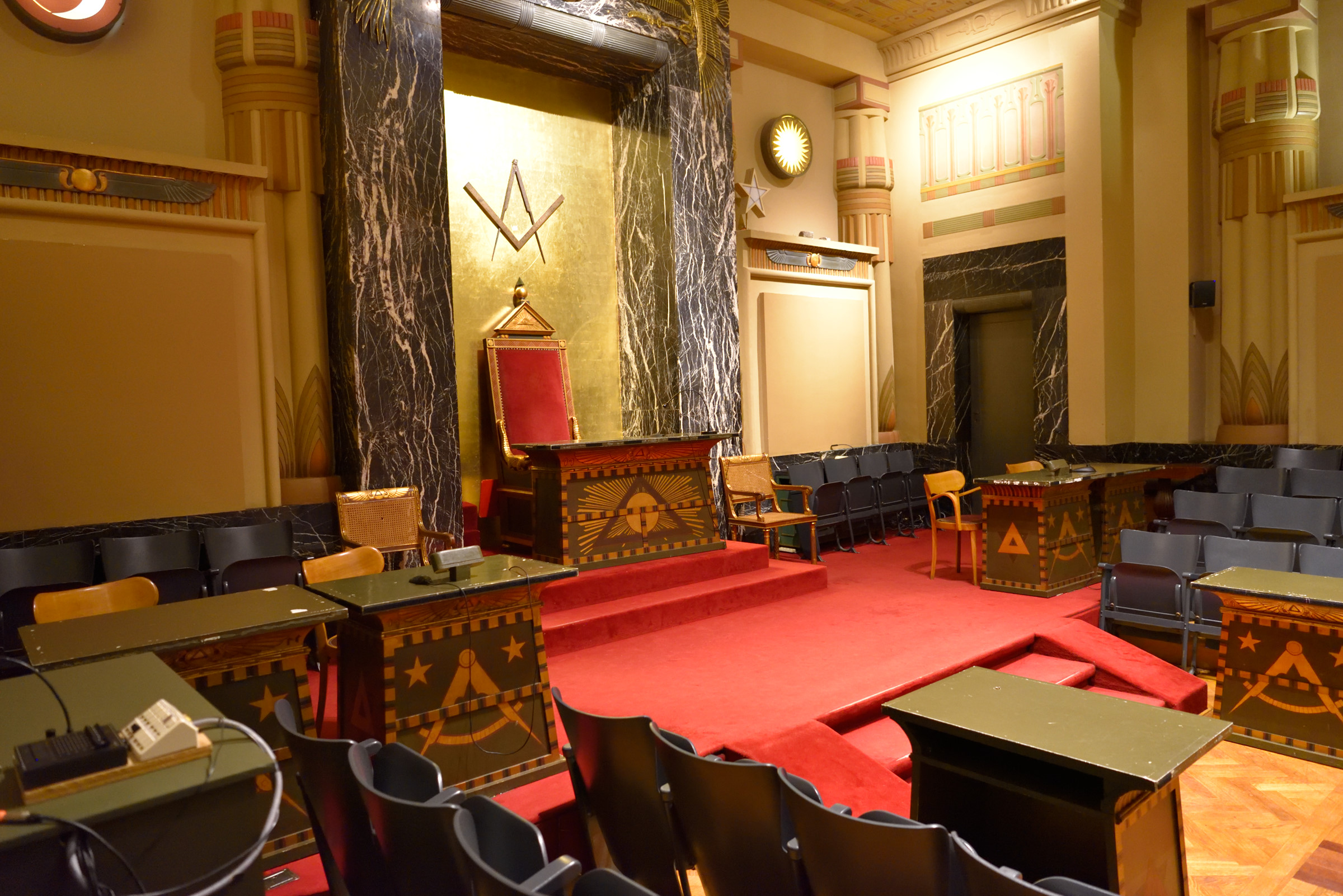
.jpg)
